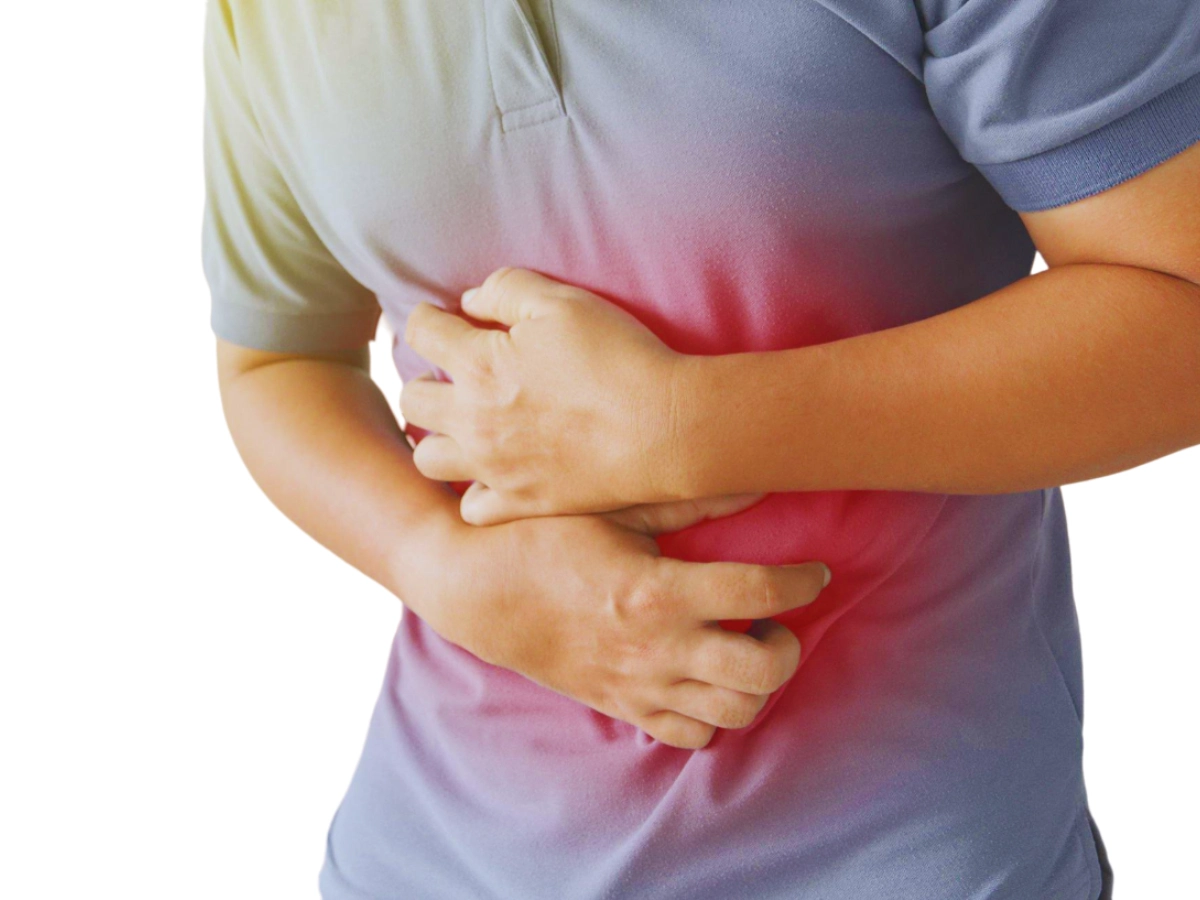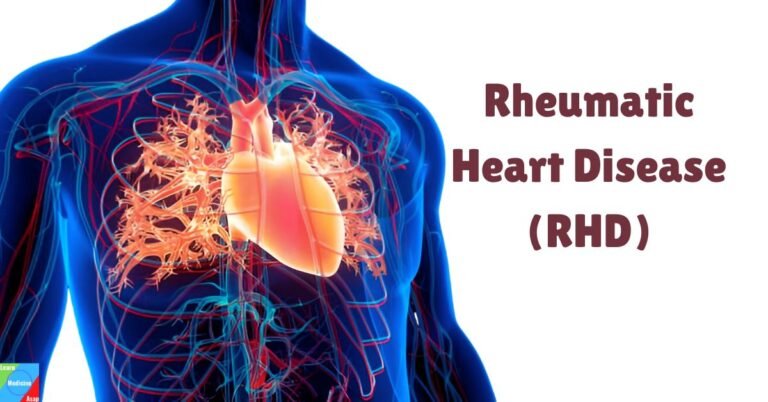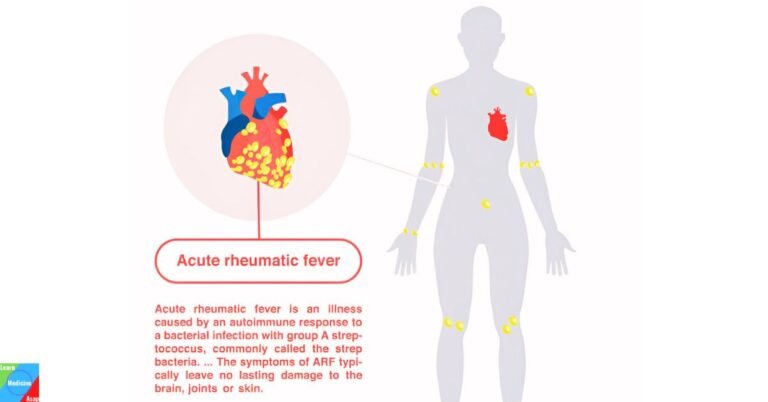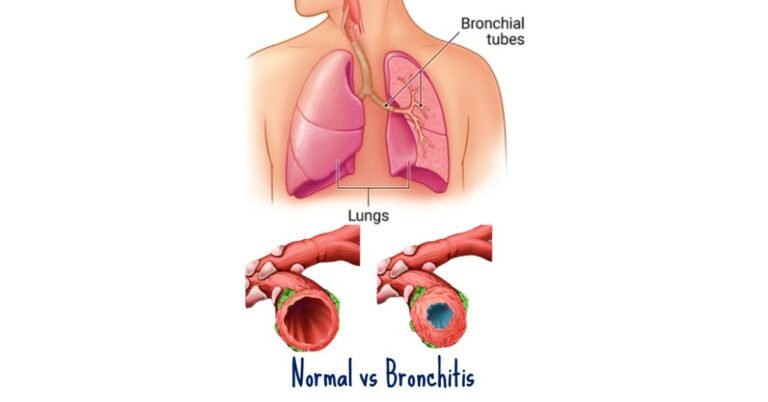Causes | Risks | Symptoms | Lifecycle | Diagnosis | Treatments | Complications | Prevention
Ascaris lumbricoides, often referred to simply as Ascaris, is a species of roundworm that infects the intestines of humans. This parasitic worm is the largest of its kind to inhabit the human body, and it can grow up to 35 centimeters in length. While Ascaris infections are prevalent in certain parts of the world, it’s essential to understand this parasite’s characteristics, transmission, and the steps you can take to protect yourself from its grasp.
What is ascariasis?
Ascaris lumbricoides is a parasite that primarily affects humans and is part of the family Ascarididae. These roundworms are cylindrical in shape and have a smooth outer cuticle. They are typically white or pale yellow in color and have a pointed head. It is a prevalent health issue, especially in regions with poor sanitation and limited access to clean water. Ascariasis primarily affects humans but can also infect certain animals, such as pigs.

What causes an ascariasis infection?
Ascariasis infection is caused by the ingestion of microscopic eggs of the parasitic roundworm Ascaris lumbricoides. Once ingested, the eggs hatch, releasing larvae that mature into adult worms in the human intestines.
What are the risk factors for ascariasis infection?
Geographic Location:
- Ascariasis is more prevalent in regions with inadequate sanitation infrastructure and limited access to clean drinking water. Areas with warm and humid climates often have higher infection rates.
- Developing countries, especially those in Africa, Asia, and Latin America, are disproportionately affected due to poor sanitation practices.
Poor Sanitation:
- Lack of proper sewage systems and toilets increases the risk of fecal contamination in the environment, leading to soil and water contamination with Ascaris eggs.
- Open defecation, where people defecate in the open, is a significant contributor to the spread of ascariasis in areas with inadequate sanitation.
Poorly Cooked Food:
- Consuming raw or undercooked vegetables and fruits grown in contaminated soil can be a source of infection, as the eggs can adhere to the produce.
Limited Access to Clean Water:
- In areas where clean and safe drinking water is scarce, people may be more likely to consume contaminated water sources, which can contain Ascaris eggs.
Socioeconomic Factors:
- Low socioeconomic status and poverty often correlate with a higher risk of ascariasis. Poor living conditions and limited access to healthcare and education can contribute to increased infection rates.
- Lack of awareness about hygiene practices and preventive measures can also be more prevalent in economically disadvantaged communities.
Age:
- Children, especially those between the ages of 2 and 10, are at higher risk due to their habits of putting contaminated objects in their mouths, playing in contaminated soil, and having less developed immune systems.
- Infection rates tend to decrease with age as individuals develop immunity from repeated exposures.
Occupation:
- Certain occupations, such as agriculture and farming, can increase the risk of ascariasis. Farmers who work with contaminated soil or use human feces as fertilizer may be at greater risk.
Hygiene Practices:
- Poor personal hygiene, such as not washing hands after using the toilet or before eating, can increase the likelihood of ingesting Ascaris eggs.
Lack of Education:
- Limited knowledge about the transmission of ascariasis and preventive measures can contribute to a higher risk of infection.
- Education campaigns and health awareness initiatives can be effective in reducing infection rates.
Travel to Endemic Areas:
- Travelers from non-endemic regions who visit areas with a high prevalence of ascariasis may be at risk if they do not take precautions to avoid contaminated food and water.
Immunocompromised Individuals:
- People with weakened immune systems, such as those with HIV/AIDS or undergoing immunosuppressive therapy, may be more susceptible to severe ascariasis infections.
What are the symptoms of ascaris?
Symptoms of Ascaris lumbricoides infection can vary in severity and may depend on factors such as the number of worms involved, the age and health of the individual, and the stage of the infection. It’s important to note that many people with ascariasis may remain asymptomatic or have only mild symptoms. However, in cases of heavy infestation or complications, the following symptoms may be observed:
Gastrointestinal Symptoms:
- Abdominal Pain: Mild to moderate abdominal pain is a common symptom of ascariasis. It is often described as cramping or colicky and is caused by the movement of the worms in the intestines.

- Nausea and Vomiting: Some individuals with ascariasis may experience nausea and occasional vomiting, especially when the worms migrate to the stomach or block the intestine.
- Diarrhea or Constipation: Ascariasis can disrupt normal bowel movements, leading to episodes of diarrhea or constipation.
Nutritional Symptoms:
- Malnutrition: In cases of heavy infestation, especially in children, ascariasis can lead to malnutrition. This occurs because the worms compete for nutrients in the small intestine, depriving the host of essential vitamins and minerals.
- Growth Stunting: Chronic ascariasis in children can result in growth stunting, affecting physical and cognitive development.
Respiratory Symptoms:
- Cough: When Ascaris larvae migrate through the lungs, they can cause irritation and coughing. This symptom is more commonly seen in children.
- Wheezing: Wheezing and other respiratory symptoms may occur as a result of larval migration in the respiratory tract.
Visible Worms:
- In severe cases, adult Ascaris worms may be expelled from the mouth, nose, or rectum. This is a rare but distinctive symptom of heavy infestation.
- Patients or caregivers may notice worms in stools, vomit, or mucus.
Allergic Reactions:
- Some individuals may develop allergic reactions to Ascaris larvae or their secretions. Allergic symptoms can include hives, skin rashes, itching, swelling, and in severe cases, difficulty breathing.
Appendicitis-like Symptoms:
- In rare instances, the presence of Ascaris worms in the appendix can mimic the symptoms of appendicitis, including lower-right abdominal pain and fever.
Asymptomatic Infection:
- Many individuals, especially those with low worm burdens, may not experience any noticeable symptoms. They can still harbor the parasites and pass Ascaris eggs in their feces, contributing to the spread of the infection.
Lifecycle of ascaris lumbricoides
The life cycle of Ascaris lumbricoides is a complex process that helps us understand how this parasitic worm infects and survives within its human host. Here is a detailed description of the lifecycle of Ascaris lumbricoides:
Egg stage:
- The lifecycle begins with adult female Ascaris worms residing in the small intestine of an infected human.
- These adult female worms produce thousands of microscopic eggs each day.
- The eggs are released into the host’s small intestine, where they are then passed out of the body in the feces.
External environment:
- Ascaris lumbricoides eggs are tough and resilient. They can survive for long periods in the external environment, even in adverse conditions.
- The eggs are particularly resistant to desiccation and can endure in soil, contaminated water, or on surfaces.
Infection stage:
- The key mode of transmission to humans occurs when individuals come into contact with environments contaminated with Ascaris eggs. Common transmission routes include:
- Ingestion: People can ingest the eggs unknowingly when contaminated hands touch the mouth, or by consuming contaminated food, water, or objects.
- Soil Contact: Ascariasis is often prevalent in areas where open defecation is common, leading to soil contamination with Ascaris eggs. Individuals can become infected by touching contaminated soil or surfaces and then inadvertently transferring the eggs to their mouths.
Larval development:
- Once ingested, the Ascaris eggs make their way to the small intestine.
- In the small intestine, the eggs hatch, releasing immature larvae.
- These larvae then penetrate the wall of the small intestine and enter the bloodstream.
Migration through the body:
- The larvae are carried by the bloodstream to the liver and then to the lungs.
- In the lungs, the larvae may cause respiratory symptoms, including coughing and wheezing.
- After spending several weeks in the lungs, the larvae move up the respiratory tract, are swallowed, and return to the small intestine.
Adult stage:
- In the small intestine, the larvae mature into adult worms.
- Adult Ascaris worms can grow to be quite large, reaching lengths of up to 12 inches (30 centimeters).
- The adult worms attach themselves to the intestinal wall, where they feed on nutrients from the host’s digested food.
Reproduction:
- Female adult worms produce large quantities of eggs, which are then excreted in the host’s feces.
- The cycle continues when these eggs are released into the environment through fecal matter.
The entire life cycle of Ascaris lumbricoides from egg ingestion to egg production by adult worms takes approximately two to three months. During this time, the worms can cause a range of symptoms in the host, including abdominal pain, respiratory issues, and nutritional deficiencies, particularly in cases of heavy infection.
How is ascariasis diagnosed?
Diagnosing Ascaris infections often involves a combination of clinical symptoms, stool examinations, and sometimes imaging studies to identify the presence of worms.
Clinical assessment:
- The diagnosis of ascariasis often begins with a thorough clinical assessment of the patient’s symptoms and medical history.
- Common symptoms that may raise suspicion of Ascaris infection include abdominal pain, diarrhea, vomiting, respiratory symptoms (such as cough and wheezing), and visible worms in stools (in severe cases).
- A detailed patient history, including travel to endemic areas or known exposure to contaminated environments, can provide valuable clues.
Stool examination:
- Stool examination is the primary and most common method for diagnosing ascariasis. It involves the microscopic examination of a stool sample for the presence of Ascaris eggs.
- To perform this test, a fresh stool sample is collected and sent to a laboratory for analysis. In the laboratory, the sample is processed, and a trained technician examines it under a microscope.
- Ascaris eggs are distinctive and can be identified based on their size, shape, and appearance. They are typically oval or spherical, with a thick, brownish shell.
Serological tests:
- Serological tests involve the detection of antibodies specific to Ascaris lumbricoides in the patient’s blood serum.
- These tests, such as enzyme-linked immunosorbent assay (ELISA), can be useful for diagnosing ascariasis, especially when the stool examination may not yield definitive results.
- Serological tests are often employed in research and epidemiological studies to estimate the prevalence of ascariasis in a population.
Imaging studies:
- In some cases, imaging studies like X-rays or ultrasound may be employed to visualize the presence of adult worms in the intestines or complications resulting from heavy infestations.
- X-rays may reveal a characteristic “spaghetti-like” appearance caused by coiled adult worms in the intestine.
Endoscopy and colonoscopy:
- In severe cases or when complications are suspected, medical professionals may perform endoscopy or colonoscopy to directly visualize and remove adult worms from the gastrointestinal tract.
Observation of worms:
- Occasionally, adult worms may be visible in the mouth, nose, or rectum of an infected individual, particularly in cases of heavy infestation.
- This direct observation of worms is a strong indication of ascariasis.
It’s important to note that Ascaris lumbricoides infections can range from asymptomatic or mild to severe, so diagnosis may be challenging in cases with few or no symptoms. Additionally, a single stool examination may not always detect the presence of Ascaris eggs, as the shedding of eggs can be intermittent. Therefore, multiple stool samples may be required for a more accurate diagnosis.
How is ascariasis treated?
Treatment for Ascaris lumbricoides infections typically involves antiparasitic medications prescribed by a healthcare professional. These medications aim to kill the worms and allow them to pass out of the body naturally.
Medications:
The primary approach to treating ascariasis is the administration of antiparasitic medications, which are highly effective in killing adult Ascaris worms and, in some cases, their larvae.
The two most commonly used medications for treating ascariasis are:
- Albendazole: This medication is typically given as a single oral dose. It works by disrupting the metabolism and cellular structure of the worms, leading to their death.
- Mebendazole: Similar to albendazole, mebendazole is also administered as a single oral dose. It interferes with the worms’ ability to absorb nutrients, ultimately killing them.
The choice between albendazole and mebendazole may depend on factors such as availability, local drug resistance patterns, and the patient’s specific medical condition.
Dosage and administration:
The exact dosage of albendazole or mebendazole depends on the patient’s age, weight, and the severity of the infection.
These medications are usually taken with food to enhance absorption and minimize side effects.
It is crucial to complete the full course of treatment as prescribed by a healthcare provider, even if symptoms improve or disappear before the treatment is finished.
Treatment of complications:
- In severe cases of ascariasis or when complications arise, additional medical interventions may be required.
- For complications such as intestinal obstruction or pneumonia due to larval migration, patients may need hospitalization and specialized care.
Management of nutritional deficiencies:
Individuals with chronic or severe ascariasis may develop nutritional deficiencies. In such cases, healthcare providers may recommend nutritional supplementation or dietary interventions to address these deficiencies.
Follow-Up:
After completing the initial treatment, patients may be asked to return for follow-up stool examinations to confirm the absence of Ascaris eggs and ensure the infection has been successfully cleared.
In cases of heavy infestation or persistent symptoms, a second round of treatment may be necessary.
What are the complications of ascariasis?
While many individuals with ascariasis may experience mild or no symptoms, complications can occur and can range from gastrointestinal issues to more severe conditions. These complications occur when the infection is severe or when multiple worms are present in the body. Here are the complications associated with Ascaris lumbricoides infection:
Intestinal obstruction:
- One of the most significant complications of ascariasis is intestinal obstruction, which occurs when a large number of adult worms aggregate and form a tangled mass in the small intestine.

- This mass of worms can obstruct the normal passage of food and intestinal contents, leading to symptoms such as severe abdominal pain, bloating, nausea, vomiting, and an inability to pass stool or gas.
- Intestinal obstruction is a medical emergency that requires immediate intervention, often through surgery to remove the mass of worms.
Malnutrition and growth stunting:
- Ascaris worms consume nutrients from the host’s ingested food in the small intestine. In cases of heavy infestations, this can lead to malnutrition, especially in children.
- Chronic infection with Ascaris can result in poor nutrient absorption and growth stunting, which can have long-term consequences on physical and cognitive development, particularly in children.
Respiratory complications:
During the migration of Ascaris larvae through the body, they can reach the lungs. This migration can lead to various respiratory issues, including:
- Cough: Larvae irritate the respiratory passages, causing persistent coughing.
- Wheezing: Some individuals may experience wheezing and difficulty breathing.
- Pneumonia: In rare cases, larval migration can lead to pneumonia, which may require medical treatment.
Pancreatitis:
- Severe ascariasis can lead to pancreatitis, an inflammation of the pancreas. The exact mechanism is not fully understood, but it may result from the blockage of the pancreatic duct by migrating worms.
- Pancreatitis can cause abdominal pain, nausea, vomiting, and complications related to improper digestion and nutrient absorption.
Cholecystitis:
Ascaris worms can migrate into the bile ducts, leading to cholecystitis (inflammation of the gallbladder). This can result in symptoms such as abdominal pain, jaundice (yellowing of the skin and eyes), and digestive disturbances.
Allergic reactions:
Some individuals may develop allergic reactions to Ascaris larvae or their secretions. These reactions can range from mild skin rashes to more severe symptoms like hives, swelling, and difficulty breathing.
Appendicitis-like symptoms:
In some cases, the presence of Ascaris worms in the appendix can mimic the symptoms of appendicitis, leading to abdominal pain and discomfort.
Migration to unusual sites:
In very rare instances, Ascaris larvae can migrate to other organs, such as the liver or pancreas, causing inflammation and complications specific to those organs.
How can an ascariasis infection be prevented?
Given that ascariasis is highly prevalent in areas with poor sanitation and limited access to clean water, effective prevention strategies are essential. These measures not only reduce the incidence of ascariasis but also contribute to overall public health and well-being in affected communities.
Improved sanitation:
- Adequate sanitation facilities, including the construction of toilets and proper sewage disposal systems, play a crucial role in preventing ascariasis. The goal is to prevent human feces, which contain Ascaris eggs, from contaminating the environment.
- Encouraging communities to stop open defecation and use sanitary latrines significantly reduces the risk of soil and water contamination.
Access to clean water:
- Access to clean and safe drinking water sources is vital for preventing Ascaris infection. Communities should have access to clean water for drinking, cooking, and personal hygiene.
- Providing treated or boiled water can help minimize the risk of ingesting Ascaris eggs through contaminated water.
Hygiene education:
Health education campaigns are essential for raising awareness about the transmission of ascariasis and promoting proper hygiene practices. Key messages include:
- Handwashing: Encouraging individuals to wash their hands thoroughly with soap and clean water after using the toilet and before eating.
- Personal Hygiene: Teaching individuals, particularly children, not to put contaminated objects or fingers in their mouths.
- Use of Toilets: Promoting the use of sanitary toilets and discouraging open defecation.
Health education in schools:
- Incorporating hygiene and sanitation education into school curricula helps instill good hygiene habits in children from an early age.
- Schools can also serve as platforms for promoting deworming programs.
Mass Drug Administration (MDA):
- In endemic areas, where ascariasis is highly prevalent, mass drug administration programs may be implemented. These programs involve the distribution of antiparasitic medications to entire communities or at-risk populations.
- The aim is to reduce the prevalence of the infection in the community and prevent reinfection.
Deworming programs:
- Regular deworming of school-age children and high-risk populations with antiparasitic medications (e.g., albendazole or mebendazole) can help control the spread of ascariasis.
- Deworming is typically conducted periodically, such as once or twice a year, to target asymptomatic carriers and reduce worm burdens.
Improved food handling practices:
- Educating individuals on safe food handling practices can help reduce the risk of ingesting Ascaris eggs present on raw or unwashed fruits and vegetables.

- Proper cooking and washing of produce can minimize the risk of infection.
Soil and environmental hygiene:
- Minimizing contact with contaminated soil, especially for children at play, can reduce the risk of exposure to Ascaris eggs.
- Good environmental hygiene, including the regular cleaning of living spaces and thorough washing of household items, can also contribute to prevention.
Frequently Asked Questions
Q: Can Ascaris lumbricoides infections be fatal?
A: In most cases, Ascaris infections are not fatal. However, severe infections can lead to complications, especially in children and individuals with weakened immune systems.
Q: Are there any natural remedies for Ascaris infections?
A: While natural remedies may provide some relief from symptoms, it’s essential to seek medical treatment for Ascaris infections to ensure the complete removal of the worms.
Q: Is Ascaris lumbricoides common worldwide?
A: Yes, Ascaris infections are widespread, particularly in regions with inadequate sanitation and hygiene practices.
Q: Can pets transmit Ascaris infections to humans?
A: While Ascaris lumbricoides primarily infects humans, some related species can infect animals. However, the transmission of Ascaris from pets to humans is rare.
Q: How can I protect myself and my family from Ascaris infections?
A: Practicing good hygiene, including regular handwashing, consuming clean water and food, and maintaining proper sanitation, is crucial for preventing Ascaris infections.
Q: Are there any ongoing research efforts to combat Ascaris infections?
A: Yes, ongoing research aims to develop more effective treatments and preventive measures for Ascaris lumbricoides infections.
Takeaway
Ascaris lumbricoides, the giant roundworm, may be a common parasite, but it’s not one to be underestimated. Understanding its lifecycle, symptoms, treatment options, and prevention strategies is vital for safeguarding your health and the health of your loved ones. By practicing good hygiene and seeking medical treatment, when necessary, you can minimize the risks associated with Ascaris infections.
References
- Jordan EL and Verma PS. 2018. Invertebrate Zoology. 14th Edition. S Chand Publishing.
- Kotpal RL. 2017. Modern Text Book of Zoology- Invertebrates. 11th Edition. Rastogi Publications.
- Lamberton PHL, et al. (2015).Human ascariasis: Diagnostics update. DOI:
https://doi.org/10.1007/s40475-015-0064-9 - Parasites — ascariasis. (2018).
http://www.cdc.gov/parasites/ascariasis/ - NCBI — ascaris. https://www.ncbi.nlm.nih.gov/books/NBK430796/



